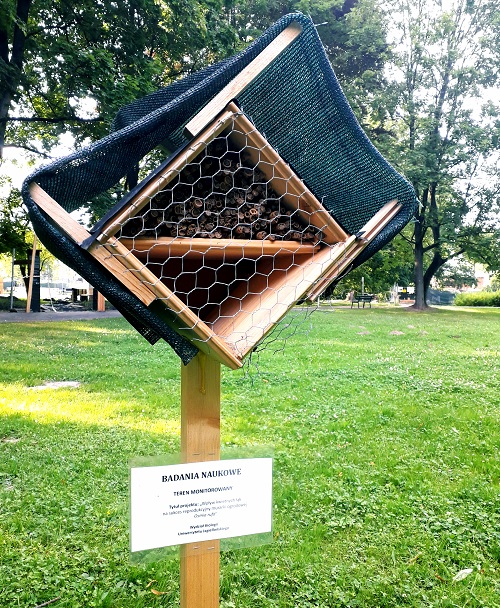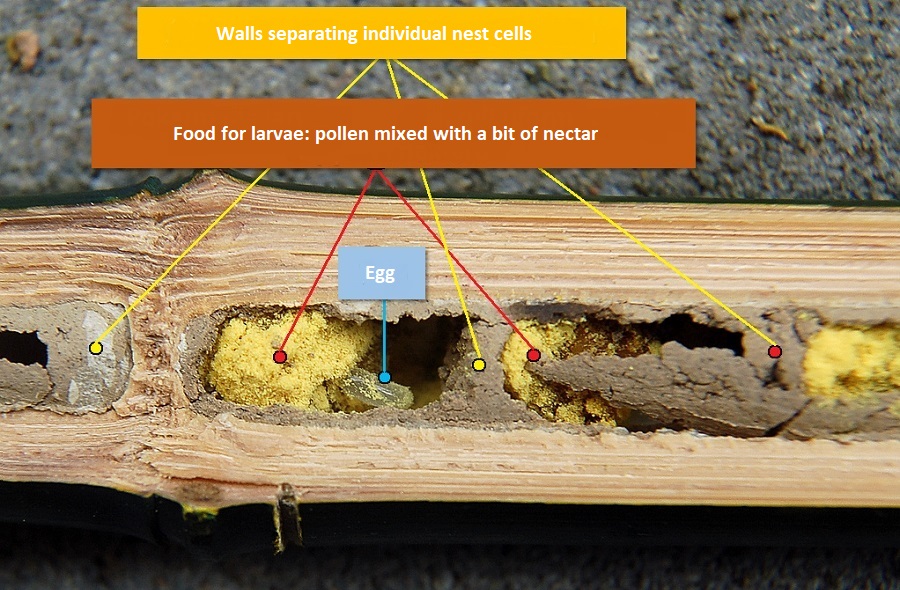
Current trends in urban design favour planting low-maintenance wildflower meadows in green spaces in cities due to their aesthetic qualities and apparent benefits for insects that struggle in an environment so utterly transformed by man. This seemingly ideal solution has a hidden catch: we’re not yet entirely sure how these urban meadows will affect pollinators in the long run. Dr Joanna Kajzer-Bonk from the JU Institute of Zoology and Biomedical Research currently runs a project aimed to determine the potential consequences of this design.
Urban meadows are a significant step in relaxing the very strict regulations that govern the design of green spaces. A mix of wildflower seeds is simply sown in a chosen area after removing the upper layer of turf (unfortunately, species found in these mixes are very often alien and potentially invasive). It’s very often portrayed as an attractive and low-cost alternative to carefully planned hedges and flowerbeds. Proponents of urban meadows praise their aesthetically pleasing look and point to their role in increasing biodiversity, which aids in survival of insects.
In 2017, the city of Kraków spent about 750,000 zlotys (~175,000 euro) to plant 10 hectares of urban meadows, mostly next to roads.1 Regrettably, there is still much to be learned about their real impact on biodiversity. Could it be possible that meadows intended to help pollinators will, in fact, harm them?
Biodiversity under threat

Loss of biodiversity is currently considered to be one of the most pressing issues of Anthropocene (the current epoch in the history of the world).2, 3 This is caused chiefly by rapid, unbridled expansion of urban complexes which results in a decrease in flora and fauna. Sadly, recent estimates do not bode well. According to the UN, by 2025 over 60% of people will be living in cities. This entails an extension of communication routes, such as roads and railroads, which cause increased mortality rates in animals, including insects.4, 5
In order to prevent the destruction of biodiversity, people started planting urban meadows. In theory, they are a source of food for insects in heavily transformed urban environments. As cities grow ever more dense, they will also facilitate sharing space between humans and animals. However, the fact that these meadows are frequently found in adjacency to streets can have some unintended but detrimental consequences: insects attracted by plants might be much more likely to get hit by a car. Additionally, creating ‘pocket meadows’ filled with potential prey is a sure-fire way of drawing in predators (like birds), which would very quickly thin out the numbers of the insects.
Extensive research needed
To fully identify and understand all issues related to urban meadows, it’s necessary to conduct a precise study, with particular emphasis placed on the ones located in the vicinity of roads. This is why Dr Kajzer-Bonk has just started investigating the impact of the location of urban meadows on pollinators. To do that, she and her team have set up 26 bee houses that will house solitary red mason bees (Osmia bicornis). This particular species was chosen because of their well-known development cycle, low demands, ease of breeding, and virtually no aggressiveness. Every bee house was filled with 100 larvae. Dr Kajzer-Bonk’s research will provide an unambiguous answer to the question of urban meadows: do they increase pollinators’ mortality rate, or do they facilitate the coexistence of man and bees in cities? In the face of climate change,6 this information may prove vital in our efforts to protect these useful animals.
Red mason bee (Osmia bicornis L.) is one of more than 450 species of solitary bees living in Poland.7, 8 These curious insects place their offspring in small ‘rooms’ (cells) they build out of clay on various surfaces. It’s becoming more and more common to see them in special bee houses placed near human homes. They’re very popular in fruit planting, as they’re effective pollinators, they’re easy to breed, and they have a gentle nature (they almost never use their stings).
Red mason bees store pollen and a bit of nectar in the cells along with their offspring and then wall them in to protect them from outside threats. The larvae eat the food and produce a cocoon which keeps them safe through winter. With the advent of spring, a new generation emerges from the nest.

Sources:
- ZZM (2017).
- Tollefson J. (2019), Humans are driving one million species to extinction. Nature 569, 171.
- Ripple W. J. et al. (2017), World Scientists’ Warning to Humanity: A Second Notice. BioScience 67, 1026–1028.
- Forman R. T. T. et al. (2003), Road Ecology: Science and Solutions. Island Press.
- Skórka P., Lenda M., Moroń D., Kalarus K., Tryjanowski P. (2013), Factors affecting road mortality and the suitability of road verges for butterflies. Biological Conservation 159 148–157.
- IPCC.
- Pawlikowski (2001).
- Kierat (2019).
Original text: www.nauka.uj.edu.pl





